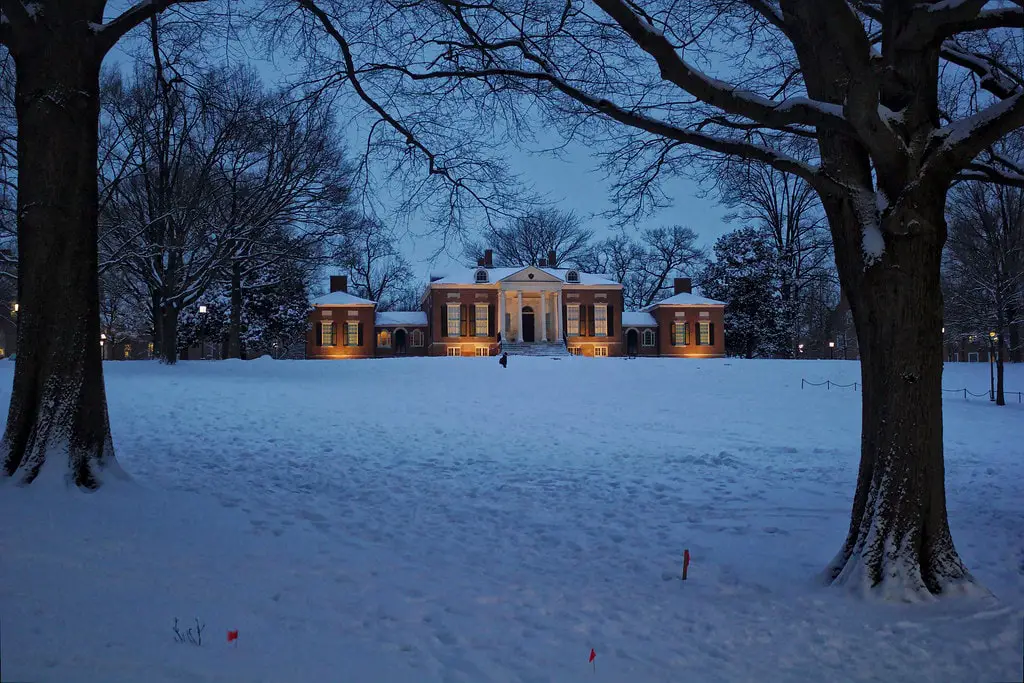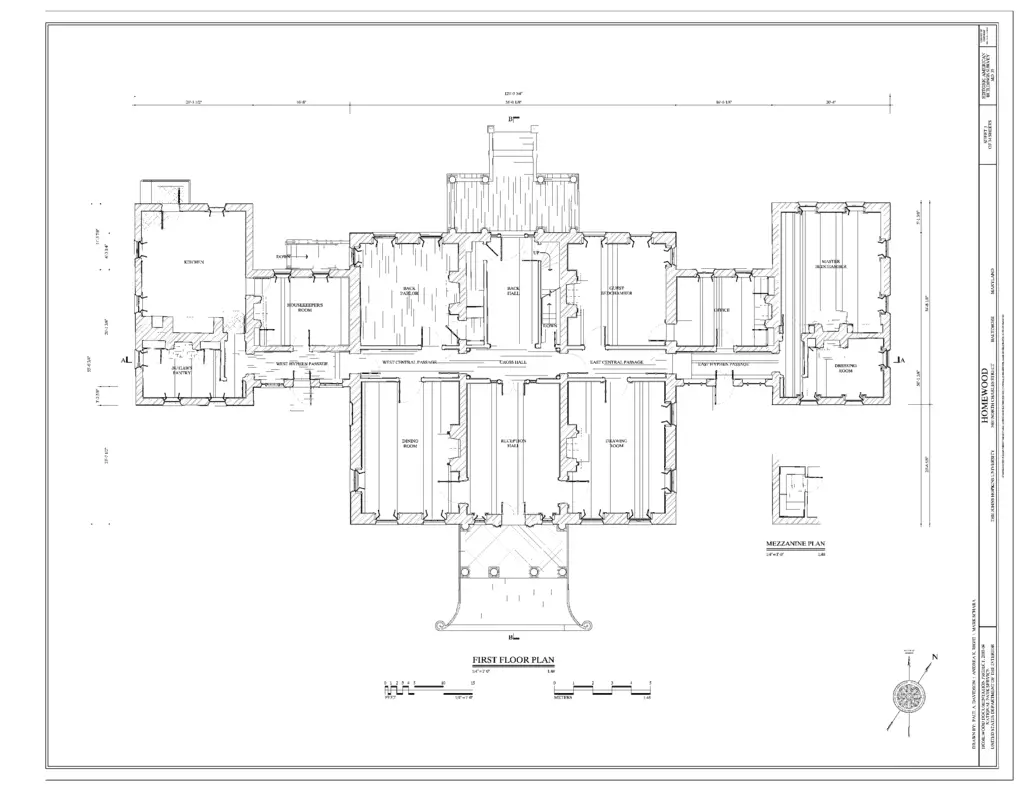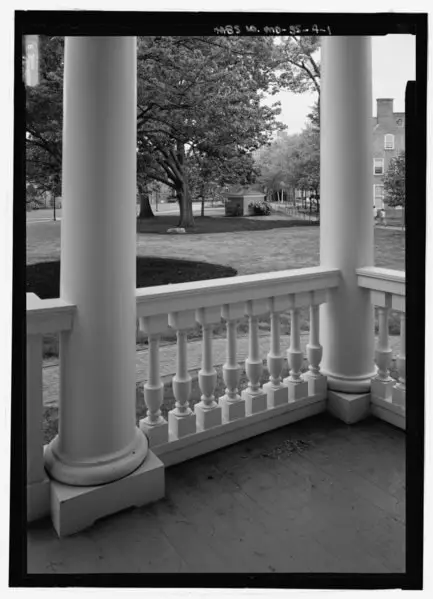A Gift That Sparked a Legacy
Imagine receiving a wedding gift that becomes a family heirloom and a national treasure as the Homewood Museum. That happened when Charles Carroll of Carrollton gifted his son, Charles Carroll Jr., a sprawling estate in 1800—known initially as “Merryman’s Lott,” the land was purchased in 1794 and spanned 140 acres in northern Baltimore.
The construction of the Homewood Estate began in 1801, designed by Charles Carroll Jr. himself. By 1808, the estate was primarily complete but not without its share of drama. The construction cost soared to $40,000, four times the initial budget, causing a rift between father and son.
This discord led to Charles Carroll Sr. buying the house from his son in 1824. He managed the property until his son died in 1825, after which it passed on to Charles Carroll III, the grandson. The estate has seen multiple generations, each leaving its mark, making it a living testament to family, ambition, and the passage of time.
The House That Stood the Test of Time
The Homewood Museum is not just another old building; it’s an architectural marvel that has stood the test of time. The estate exhibits a Palladian-inspired five-part plan, a harmonious blend of proportions and intricate details. The central block was the primary residence, flanked by pavilions linked by hyphens.
The Federal-style detailing is evident throughout the estate, reflecting influences from English architecture, particularly that of Robert Adam. Unlike Georgian architecture, known for its significant surface relief, the Federal style is flatter, with smaller-scale details. The four-columned portico is a dominating feature, adding a touch of grandeur to the estate.
The house was divided into specific areas for formal entertainment, services, and family use. The central block was the hub for formal gatherings, featuring a reception, dining, and drawing room. The west wing housed the kitchens and other service areas, while the east wing was reserved for family use.
Today, the Homewood Museum is furnished as it would have been in the 19th century. Period furnishings complement its architecture, offering visitors a glimpse into a bygone era. It’s like stepping into a time machine, where every room tells a story.

From Private Estate to Public Treasure
Ownership of the Homewood Estate has changed hands multiple times, each transition adding a new chapter to its rich history. In 1839, Charles Carroll III sold the property to Baltimore merchant Samuel Wyman.
The Wyman family lived there until 1865 and even commissioned an Italianate mansion on the grounds, known as “Homewood Villa,” which was later demolished.
1897, the estate became the first Gilman School, initially known as The Country School for Boys. By 1902, the property was reassembled and gifted to Johns Hopkins University. It served various purposes over the years, becoming the University Faculty Club in 1916 and later converting into offices for the university president and deans.
The estate opened its doors to the public in 1987, operating as the Homewood Museum. Its Federal-style architecture, characterized by red brick and white marble, has inspired the design of the entire Johns Hopkins University campus.

A Living Museum in the Heart of Baltimore
The Homewood Museum isn’t just a static display of history; it’s a vibrant cultural hub offering various experiences. Open from Tuesday to Sunday, 11 am to 4 pm, the museum provides docent-led and self-guided tours. These tours are designed to be both educational and engaging, offering visitors a chance to immerse themselves in the history and architecture of the early 19th century.
But the museum’s offerings don’t stop at tours. It also hosts various events and activities that provide a deeper understanding of its historical context. From art exhibitions to historical talks, there’s always something happening at Homewood.
For instance, on September 29, 2023, the museum will host the “(Re)Valuing Black Baltimore Exhibition Opening & Talk with Christine Iko,” a free event that promises to be enlightening and thought-provoking.

Accessibility is another strong suit of the Homewood Museum. Situated on Charles Street, it’s well-served by Baltimore City bus routes. For those who prefer to drive, limited free parking is available. Once you arrive, you can register your car at the Homewood Museum Gift Shop, making the entire experience hassle-free.
So, whether you’re a history buff, an architecture enthusiast, or someone looking to spend a day soaking in local culture, the Homewood Museum has something for everyone. It’s not just a place to visit; it’s a place to experience, learn, and, most importantly, to feel connected to Baltimore’s rich history.
Current Events and Future Prospects
While the Homewood Museum is steeped in history, it’s far from being stuck in the past. The museum has a dynamic calendar of events that cater to a wide range of interests. On October 8, 2023, as part of the “Doors Open Baltimore” initiative, the museum will offer guided tours for $12.50. This event provides an excellent opportunity for locals and visitors to explore the museum in a new light.

Another noteworthy event is scheduled for November 2, 2023. Titled “Border City, Border War: Freedom and Slavery in Antebellum Baltimore,” this free talk by Professor Richard Bell of the University of Maryland, College Park, will commemorate the 159th anniversary of Maryland’s Emancipation Day. It promises to offer a nuanced understanding of Baltimore’s complex history.
For those interested in the architectural aspects of the museum, November 8, 2023, marks the date for the “2023 Homewood Museum Architecture Lecture: Homewood’s Backyard with Michael Olmert.” Priced at $20, this illustrated lecture will delve into the architecture of Homewood’s privy, offering a unique perspective on this historic estate.
In summary, the Homewood Museum is not just a repository of historical artifacts and architectural marvels; it’s a living, breathing entity that continues to evolve. With its diverse range of events and activities, the museum offers numerous ways to engage with and learn about Baltimore’s rich history and culture.
Homewood Museum: A Timeless Treasure in Baltimore
As we’ve journeyed through the Homewood Museum’s rich history, architectural splendor, and vibrant present, it’s clear that this estate is more than just a museum. It’s a living testament to Baltimore’s cultural and historical landscape, offering a multifaceted experience beyond mere observation.

From its origins as a wedding gift in the early 19th century to its current role as a hub for education and community engagement, the Homewood Museum has continually evolved while staying true to its roots.
The museum’s dynamic calendar of events ensures that there’s always something new to discover, be it an art exhibition, a historical lecture, or an architectural tour. These events enrich the visitor experience and provide a platform for dialogue and learning, making the museum a vital part of Baltimore’s intellectual and cultural community.
Accessibility and inclusivity are at the heart of the Homewood Museum’s mission. With convenient transport options and a range of admission fees, the museum strives to be accessible to all. It’s not just about preserving the past; it’s about making that past relevant and engaging for today’s diverse audience.
So, if you find yourself in Baltimore, don’t miss the chance to visit this remarkable estate. Whether you’re a local or a visitor, the Homewood Museum offers a unique opportunity to connect with the city’s history, engage with its present, and be a part of its future. It’s not just a trip to a museum; it’s a journey through time and culture that promises to leave you enriched and inspired.
